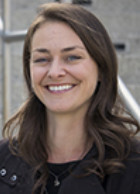As time goes on, new information is being uncovered about COVID-19 and its behaviors. And, for every bit of new information, even more questions are being asked. Basic facts—such as the way the virus is transmitted—are evolving and being challenged daily. It’s been known that, according to the U.S. Centers for Disease Control and Prevention, the virus is spread "through respiratory droplets produced when an infected person coughs, sneezes or talks," and “between people who are in close contact with one another (within about 6 feet).”
While this is true, experts have recently discovered what they refer to as “emerging evidence” that COVID-19 can be spread through airborne transmission—when even smaller droplets linger in the air for longer periods of time and travel further distances. Though more research needs to be done, infectious disease epidemiologist Maria Van Kerkhove, with the World Health Organization (WHO) Health Emergencies Program, says many of these experts are engineers, "which adds to growing knowledge about the importance of ventilation, which we feel is very important."
Now is the time to look into your club's HVAC system to stay ahead of any potential risks. The thought of this may seem daunting—especially for those that do not have much expertise in this area. But equipped with some basic knowledge, and with careful planning, you can help mitigate the spread of viruses through the air in your club.
Start with a focus on three categories:
- ventilation,
- filtration, and
- purification.
We’ll review how to identify areas of concern, and ways to communicate all updates, improvements, and safety measures with your staff and membership.

